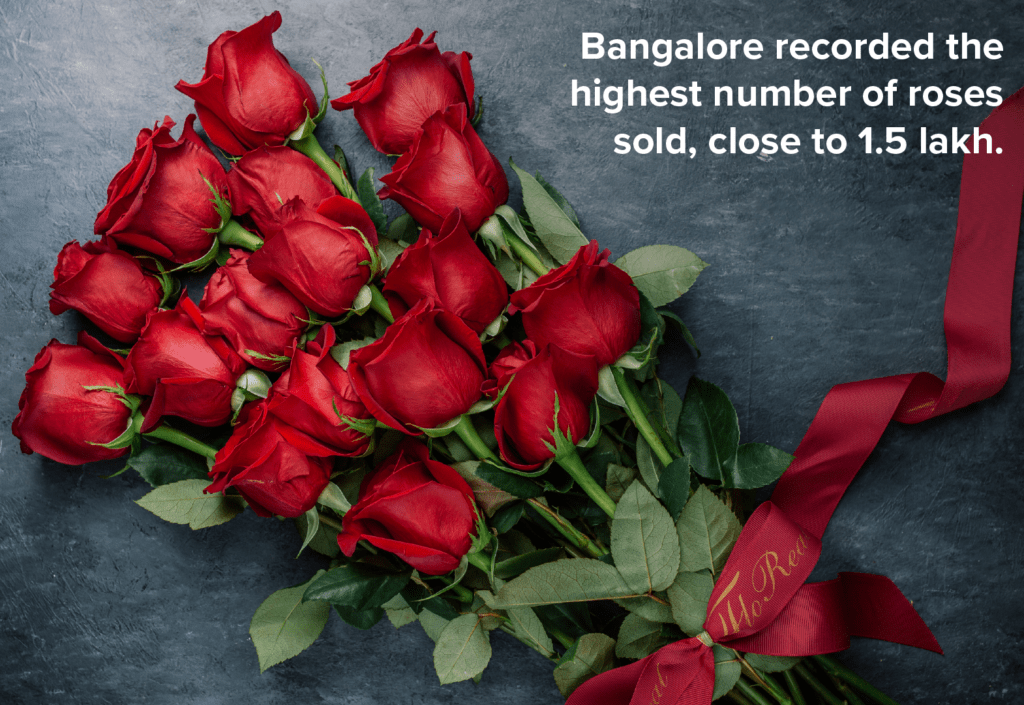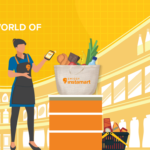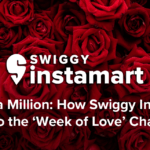This year, customers spread the love by buying a million roses from Instamart, supplying and selling these products was no easy exercise. Here’s what you need to know.
It takes but a few minutes for a customer to place, pay and receive an order of roses from Instamart. But the team responsible for sourcing, packing and delivering roses, that means months of prepping. For Rose Day and Valentine’s Day this year, Instamart delivered a whopping 1 million roses. Here’s a behind the scenes look of what the team does to make sure that receiving flowers is easy.
Stop and smell the roses
For many, two days might seem like nothing in the grand scheme of things, but the Instamart team responsible for sourcing believes otherwise. After all, managing people’s expectations and orders for two days took months of planning and preparation.
Rose Day, which falls on 7 February, is the first day of Valentine’s week. On this day, people give their loved ones a variety of roses and this marks the beginning of the “week of love”.
“Valentine’s and Rose Day are our busiest days in February. Since we’re dealing with fresh produce, the prep for these two days starts in November itself,” says Manish Chawley
Director – Category FnV, Instamart.

With rose farmers starting to sow seeds in the month, missing that window means putting stress on the teams.
“We get our produce directly from farmers. By November, if you don’t speak to them then you’re totally dependent on the market vendors who will give you roses at a random arbitrary price. This is how it works. Our Demand Planning Team predicts how much sales will happen on 7 and 14 February. They factor in details such as the growth in the next three months, our targets and based on that, they come up with a plan. This too was done back in November,” he says.
Then it’s the national sourcing team’s time to shine. Manish adds, “This team has a good connection with farmers and they start building that bond early on. When we worked with some of the vendors last year, we learnt where they source produce from. The team went to these locations and they started scouting for produce.”
On an average, Instamart currently has about 80-90 farmers who produce roses for the team. But having a list of farmers they interact with directly comes with its own challenge. “If we worked with vendors directly we wouldn’t have to wonder about the quality of produce since they do a quality check themselves and we only receive the final product. With farmers our team has to be in touch, check on produce and keep a tab over how the roses are progressing. Our experts in the field help us keep an eye on the roses. Should a crop fail then the supply gets affected, so we have to think fast and move to make up for that gap in numbers,” he explains.
Once that level is crossed and the team has a fresh supply of roses, the packing team steps in. “Once the supply is sorted, the packing team needs to ensure that the roses look presentable and are able to be delivered with care. So we have several packaging trials from the start to the mid of January. Once we’re satisfied and assured that the roses will travel safe and well, we complete this process,” he adds.
The buck doesn’t stop there. From the time that the rose is cut to the time it reaches the customer, keeping it fresh is a huge task. “It’s easier to keep a bulk of roses fresh., but when we start packing them in a single box that’s when work gets tough. So the Internal Quality Check team came up with an organic liquid solution to keep the roses fresh and beautiful. That took us about three weeks to figure,” Manish says.
Every rose comes with a thorn
Compared to 2022, this year saw a huge improvement in the number of roses being sold. “We saw an increase of 3-4x in sales in 2023,” says Manish. The increase in sales was partly due to a jump in orders-per-day and procuring more roses this year. “We also created multiple combos like chocolates, roses and cards. That gave us an additional boost,” he adds.

So what were the lessons learnt? “There were many. Last year we worked mostly with vendors. This year we planned and worked with farmers directly. Working with farmers takes more time but we have better control over quality,” he says. The team also realised that they would need to plan better next when it comes to packaging. “We started packaging products two days before the big days, but we grossly underestimated the time it would take to do so. So one learning is to start packing even earlier.
One of the biggest learnings was to be well stocked this time. “We planned for less volume last year, we were out of stock by mid-noon. We learnt that many buy roses after 9 pm on Rose Day, I guess these are people who would’ve forgotten to buy them during the day,” he says.
The team also conducted research into buying patterns and the age group they would be catering to. Manish says, “We went on a ground research exercise and did local surveys. We spoke to the Instamart pods to get an idea about the age group of the neighbourhood. So we collated data to identify where these products sell more connected to where the youth are. That worked very well for us.”

While Instamart delivered across cities in India, Bangalore and Mumbai was where a majority of the roses were sourced from. “There are huge farms outside these two cities and they power a majority of our roses. We airlifted the flowers from these to places to neighbouring cities. For Bangalore we sourced around 5 lakh roses and for Mumbai around 4 lakh roses. From these places we supplied roses to neighbouring cities as well. In some cities we partnered with vendors to procure roses,” he shares.
This year, Bangalore recorded the highest sales with close to 1.5 lakh roses being sold.
Scaling tech to make all things rosy
As teams came together to source and package all the produce, the end result wouldn’t have been possible without the support of the tech teams.
Speaking about how the Instamart Tech Stack has always been ready to handle big days and events such as these, Arnav Agarwal says, “We have had major spike events through IPL and NYE in the past, where we anticipated scaling our systems. Our previous experiences have helped us scale better for Valentine’s week. We know that on some crucial days our Discovery Systems can be under major stress, as we have a lot of collections and banners to showcase, which is why we made sure our service is strong enough to handle all that traffic.”
As traffic peaks during these days, the team needs to ensure that customer experience is still at its best. “We have caching enabled for critical services/systems that helps us serve this high surge traffic without increasing too much load on the downstream systems and also serving those requests fast. As orders per minute are also very high during peak times, we made sure that we have the pod and stress configurations set up properly. We see a high surge in the search keywords count and so we make more optimised search experiences with keyword mapping, localised keywords and more to cater the search better,” he adds.

Brighter days ahead
With two big days done, Manish and his team have not even scratched 50% of the surface. Manish says, “We’re constantly preparing for the next season and the next big thing. Now with summer coming up, Mangoes will be the top fruit to sell, so we started preparing for that in December. We also see a huge jump in the sale of coconuts.”
That’s not all, the team has a calendar for every season and most of the Indian festivals. “We want to be able to deliver the best produce to our customers and we’re working around the clock to do so,” he says.
One thing is for sure. There aren’t many things in life that are easy, but ordering on Instamart? That’s definitely a bed of roses.
Author Bio
Priyanka Praveen leads content for Swiggy's Employer and Talent Branding team. She comes with 11 years of writing experience having worked for Indian and International news organisations. She loves story-telling, is an avid embroidery artist and a wannabe baker.









































































